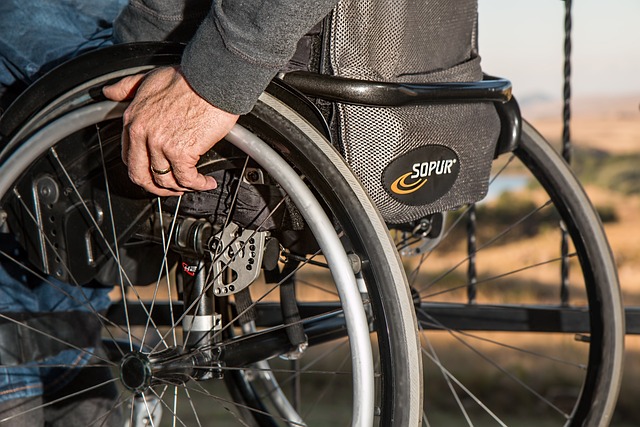Vans with Rent-to-Own Flexibility
Rent-to-own programs for vans, particularly accessible models, offer a flexible pathway to vehicle ownership that can be especially beneficial for individuals and organizations. This approach allows users to acquire a van through a series of payments, with the option to purchase the vehicle outright at the end of the term, often without the significant upfront costs associated with traditional financing or direct purchase. Understanding the structure and implications of these programs is key to making an informed decision regarding mobility and transportation needs.

What Are Accessible Vans and Who Needs Them?
Accessible vans are vehicles specifically modified to accommodate individuals with mobility challenges, primarily wheelchair users. These modifications can include features such as ramp systems (manual or automatic), power lifts, lowered floors for increased interior height, raised roofs, specialized seating, and hand controls. The goal of these adaptations is to provide safe, comfortable, and independent transportation for passengers who use wheelchairs or have other mobility needs.
Various individuals and groups can benefit significantly from accessible vans. This includes individuals with disabilities who require a wheelchair for mobility, allowing them to travel independently or with family members. Families caring for a loved one with a disability often find these vans essential for daily activities, appointments, and social outings. Beyond personal use, accessible vans are also crucial for non-emergency medical transport services, community organizations, assisted living facilities, and other entities that provide transportation for clients with diverse mobility requirements. These vehicles play a vital role in enhancing inclusion and quality of life by removing transportation barriers.
What Are the Benefits of Rent-to-Own Accessible Van Programs?
Rent-to-own programs for accessible vans present several advantages, particularly for those facing financial constraints or uncertain long-term needs. One primary benefit is the reduced upfront financial commitment compared to purchasing a van outright or securing a traditional loan. This can make accessible transportation more attainable for individuals or small organizations that may not have a large sum for a down payment.
Another significant advantage is the flexibility these programs offer. They often allow users to experience the vehicle and its modifications in their daily lives before fully committing to ownership. This ‘try before you buy’ aspect is valuable for ensuring the van meets specific needs and preferences. Should circumstances change, some programs may offer options to return the vehicle, although terms vary. Ultimately, a rent-to-own agreement can provide a structured path to ownership, with each payment contributing towards the eventual purchase, making it a viable alternative to long-term rental or traditional financing.
What Should You Consider Before Choosing a Rent-to-Own Van?
Before entering into a rent-to-own agreement for a van, it is crucial to carefully evaluate several factors to ensure the program aligns with your needs and financial situation. Understanding the full terms of the contract is paramount. This includes the total cost of the vehicle over the rental period, the monthly payment amount, any initial fees, and the final purchase price or buy-out option at the end of the term. Compare the total cost of the rent-to-own agreement with the direct purchase price of a similar vehicle to assess the financial implications.
Other important considerations involve maintenance responsibilities, mileage limits, and insurance requirements. Some agreements may place maintenance obligations on the renter, while others might include a service package. Be clear on who is responsible for routine servicing and unexpected repairs. Mileage restrictions can impact how the van is used, and understanding insurance obligations is critical for protecting both parties. Additionally, thoroughly inspect the vehicle’s condition before signing any agreement, especially if it is a used van, to avoid unforeseen issues.
Rent-to-Own Van Programs: Cost Insights
Rent-to-own van programs offer a structured payment approach, but it is essential to understand the potential costs involved. These programs generally involve monthly payments that are often higher than a traditional lease but contribute towards ownership. The total cost over the agreement term can sometimes exceed the outright purchase price due to financing charges, but they provide flexibility and lower upfront capital. For a standard accessible van, monthly payments could range significantly based on the vehicle’s value, age, modifications, and the length of the agreement.
| Product/Service | Provider (Example Type) | Cost Estimation (Monthly) | Cost Estimation (Total over 3-5 years) |
|---|---|---|---|
| Used Accessible Minivan | Specialized Dealer Program | $600 - $1,200 | $25,000 - $55,000 |
| Newer Accessible Full-Size Van | Mobility Solutions Provider | $1,000 - $2,000 | $40,000 - $90,000 |
| Standard Cargo Van | General Commercial Lessor | $400 - $800 | $15,000 - $35,000 |
Prices, rates, or cost estimates mentioned in this article are based on the latest available information but may change over time. Independent research is advised before making financial decisions.
Rent-to-own van programs offer a practical solution for acquiring transportation, particularly for accessible vehicles, by bridging the gap between immediate need and long-term ownership. They provide a flexible financial structure that can ease the initial burden of vehicle acquisition while allowing individuals and organizations to gradually work towards full ownership. A thorough understanding of the agreement terms, potential costs, and personal requirements is crucial for navigating these options successfully and securing a vehicle that meets specific mobility and logistical demands.




